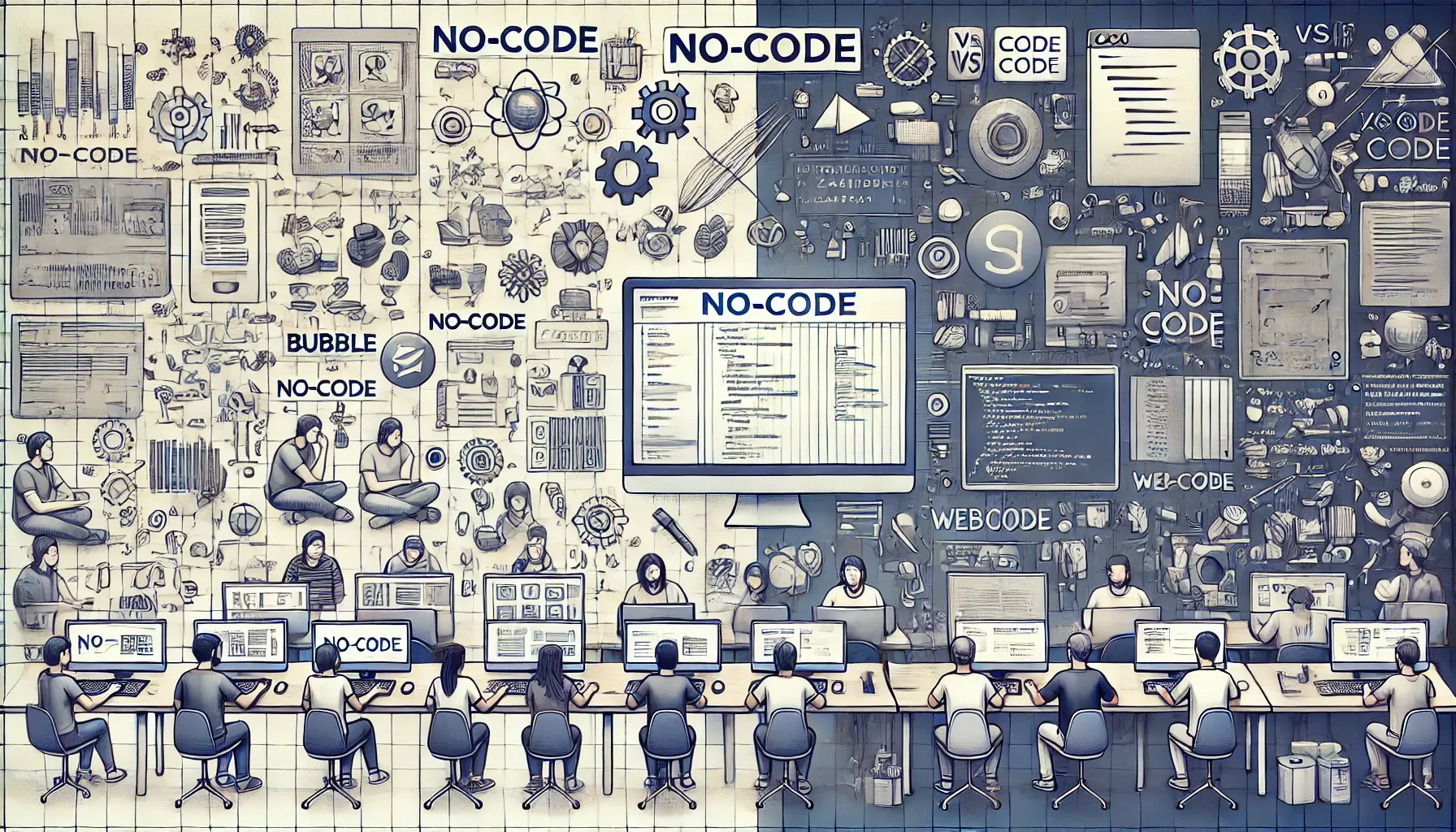Nocode Software Development Team VS Classic Software Development Team

The modern software development industry presents two key approaches: classic development and no-code development. Both have their own advantages and disadvantages, making the choice between them critically important for the success of a project.
Let’s explore the main differences between a classic development team and a no-code team, as well as determine which projects are better suited for the no-code approach.
Features of a Classic Software Development Team
Classic software development teams rely on deep programming knowledge and use traditional methodologies like Scrum for project management. These teams often consist of full-stack developers and specialized Scrum teams, enabling them to implement complex and scalable projects with a high level of customization.
Advantages
- Flexibility: Ability to fine-tune functionality and integrations.
- Scalability: Capable of supporting project growth and development in the long term.
- Technical Expertise: Access to a wide range of technologies and solutions.
Disadvantages
- High Costs: The need for qualified specialists increases the project budget.
- Long Development Time: Requires more time for planning, development, and testing.
- Management Complexity: Managing large and diverse teams can be challenging.
Features of a No-code Software Development Team
No-code platforms have revolutionized the approach to software development, opening new opportunities for tech startups. These teams can quickly turn ideas into MVPs or prototype POCs without needing deep coding knowledge, using visual interfaces to build applications.
Advantages
- Speed: Reducing development time to a few weeks, which is critical for testing market hypotheses.
- Cost Savings: Eliminating the need for full-stack developers or specialized Scrum teams reduces expenses.
- Accessibility: Entrepreneurs can independently create and test products or hire no-code teams to solve technical challenges.
Disadvantages
- Limited Customization: Customization options depend on the platform.
- Dependence: Products are subject to risks due to reliance on third-party platforms.
- Project Management: Complex projects may require a classic development team.
No-code teams, functioning as cross-functional teams, are ideal for quickly launching MVPs and iterations. They offer accessibility and speed for startups and small businesses.
Comparison: Nocode Software Development Team vs. Classic Software Development Team
Choosing between no-code and classic software development depends on the project's specifics, requirements, and resources.
The table below provides a detailed comparison of these two approaches, helping to determine the most suitable option for your project.
This comparison highlights the key differences between classic development teams and no-code teams, providing a foundation for choosing the approach that best suits the specific goals and conditions of your project.
What to Choose: No-code Software Development Team or Classic Software Development Team
The choice between no-code and classic software development teams depends on a variety of factors, including project complexity, required development speed, budget, and customization needs.
However, considering digital transformation trends and the needs of most modern projects, a no-code software development team is often an attractive and preferable option.
With a No-code Development Team, you get:
Hiring a No-code development team opens up new opportunities for your business to innovate and quickly respond to market demands while minimizing costs and risks.
However, it’s important to understand that no-code development isn’t always a one-size-fits-all solution. For complex and technology-intensive projects that require a high degree of customization and scalability, classic development may be a more suitable choice.
Conclusion
In most cases, especially when launching a new product, developing an MVP for startups, or working on projects with limited budgets, a no-code development team offers a range of advantages, making technology accessible and accelerating the innovation process. This approach allows for faster market testing of ideas, adapting to its demands, and reducing the time and costs associated with development. At the same time, for projects with specific functionality and scalability requirements, the choice may lean towards classic development teams. Ultimately, the optimal choice depends on the project's specifics, its goals, and available resources.

